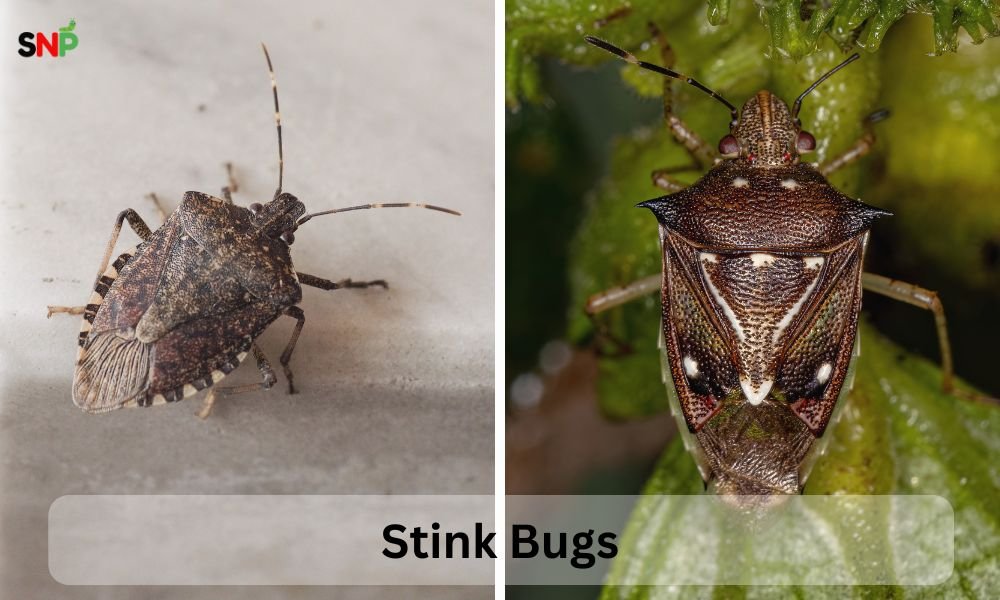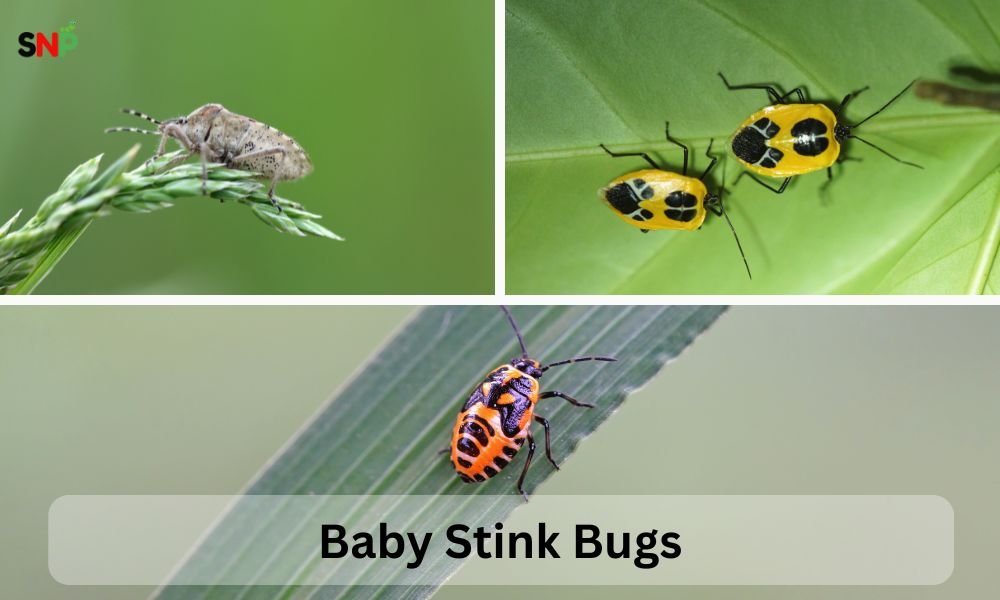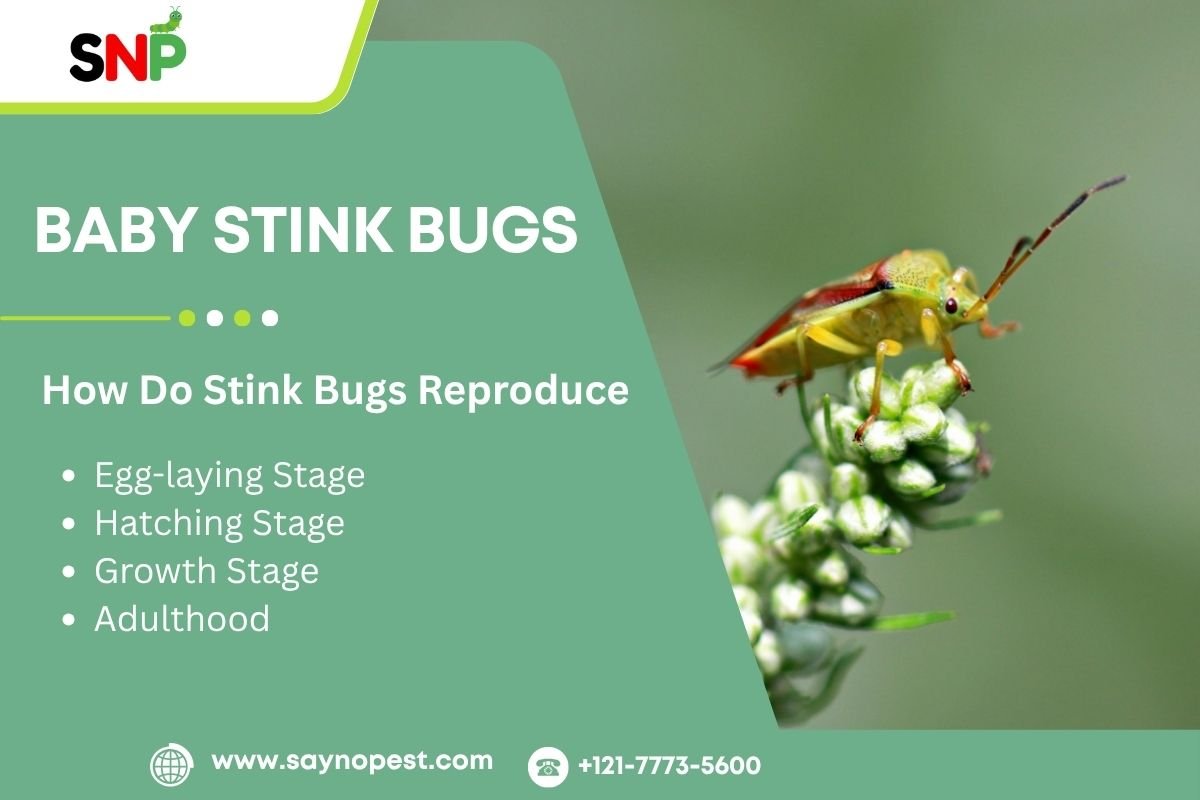Have you noted some tiny, strange-looking insects walking on the plants outdoors or even inside your house? You might be dealing with baby stink bugs. These small yet harmful garden bugs, also known as stink bug nymph, are occurring in no time in gardens and houses across the United States. The knowledge of their life cycle, the method of their reproduction, and the way to control them is the cornerstone of your pest-free area.
What Are Baby Stink Bugs?
Baby stink bugs are refer to as stink bug nymph. At the beginning of their hatching, these nymphs are the most important life stage of the insect and are not as large as adult ones, and they also lack fully developed wings, by which they cannot fly. The growth of these nymphs is determin by stages in which they have to moult five times. In all these stages, they look quite different from the adult stink bug. Some of them are black, red, yellow, and green, before changing the look into a familiar adult one. Their colours depend on the host plant on which they exist.

The stink bug nymph spend most of their time on the lower side of the leaves, where they can have their meals while injecting the needle-piercing method of feeding the plant’s sap. If the infestation gets serious, the bugs, inadvertently carried indoors, can also attack the house plants and in this way wear down the gardens and the crops.
Stink Bug Eggs: The Beginning of the Problem
The period of each infestation got its start from the stink bug eggs. Mother stink bugs lay 20- 50 eggs that come together in the shape of a cluster. The female bug always chooses the lower leaf side for placing the eggs so that the young generation is freed from the danger caused by the predators and the various weather conditions. These eggs of stink bugs have a shape of a barrel and are white, yellow, or green depending on the bug species.
After 4 to 7 days, the eggs are hatched and released, and the numerous groups bustling with activity are spreading all over the space ready to chew and grow. If uncontrolled, they can be almost impossible to deal with in no time and thus can cause a big problem for the homeowners as well as the gardeners.
How Do Stink Bugs Reproduce?
The life span of the stink bugs ends up quickly and also is taken home by the breeding mechanism. When they do the mating, the females make and distribute multiple egg clusters of stink bugs throughout the organic season. If the climate is hot, there are several generations in stink bugs per annum, and each one only takes a few weeks from an egg to an adult stage.
So, the cycle can be describ like this:
- Egg-laying: Females are laying egg clusters on the leaves.
- Hatching: After a week, the eggs break and we get baby stink bugs (nymphs).
- Growth: Nymphs go through five processes of moulting, and they become more massive with each step.
- Adulthood: In 4 to 6 weeks, the nymphs-turned-adults will start the cycle again.
Such a situation of the shortest-time reproduction process is very dangerous, as small problems can grow very quickly into big ones, especially if the weather is warm and the stink bugs feel comfortable.

Stink Bugs in House: Why and How They Invade
Stink bugs usually migrate to other places, e.g. indoors in search of shelter or energy during the cold winter months, leading to the common problem of stink bugs in house. Both adults and baby stink bugs can sneak in through almost invisible cracks around the windows, doors, and foundations. Sometimes you will find them hiding in walls, attics, or basements and will come out again once the temperature increases inside the house.
The presence of stink bugs in the house is not just a nuisance due to their smell-when threatened, both adults and nymphs release a foul odour as a defence. While baby stink bugs do not bite or harm humans, their numbers as well as their smell are simply unbearable.
Managing and Avoiding Stink Bug Infestations
These methods will help prevent and control stink bugs in the house and garden:
- Seal Potential Entry Points: Check and caulk surrounding areas of doors, windows and utility pipes.
- Destroy Egg Clusters: Frequently examine plants for stink bug eggs and remove them before they hatch.
- Apply Ecological Repellents: Mint, garlic, and neem oil sprays may applied to plants to keep baby stink bugs and adults away from them.
- Invite Natural Enemies: By killing the nymphs and eggs, birds, ladybugs, and parasitic wasps can be useful predators of stink bugs.
- Release Kindly: Should you happen to bump into baby stink bugs in your house, kindly use a container to transport them outside instead of squishing them, and let their smell out.
Conclusion
Baby stink bugs can be big trouble for gardens and houses. Knowing the lifecycle from stink bug eggs to stink bug nymphs and adults and how these pests are produced will help you put measures to protect your home and plants. Do not let the impact of stink bugs on your house disturb your peace; with prescribed early intervention and the right strategies and you can keep these pests at bay and enjoy a healthy, comfortable environment.
